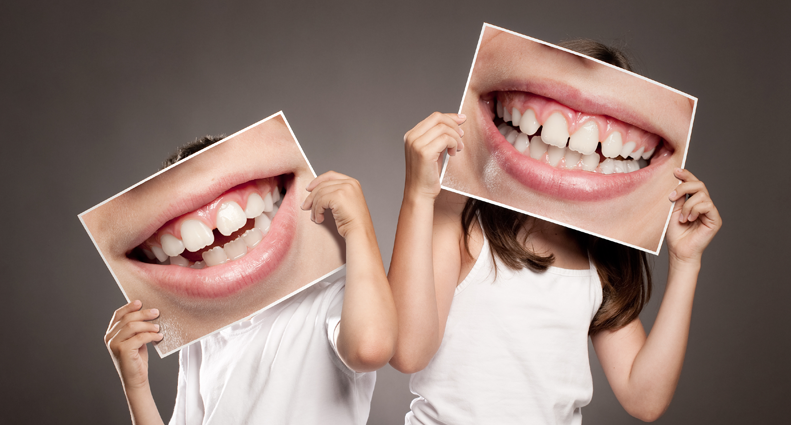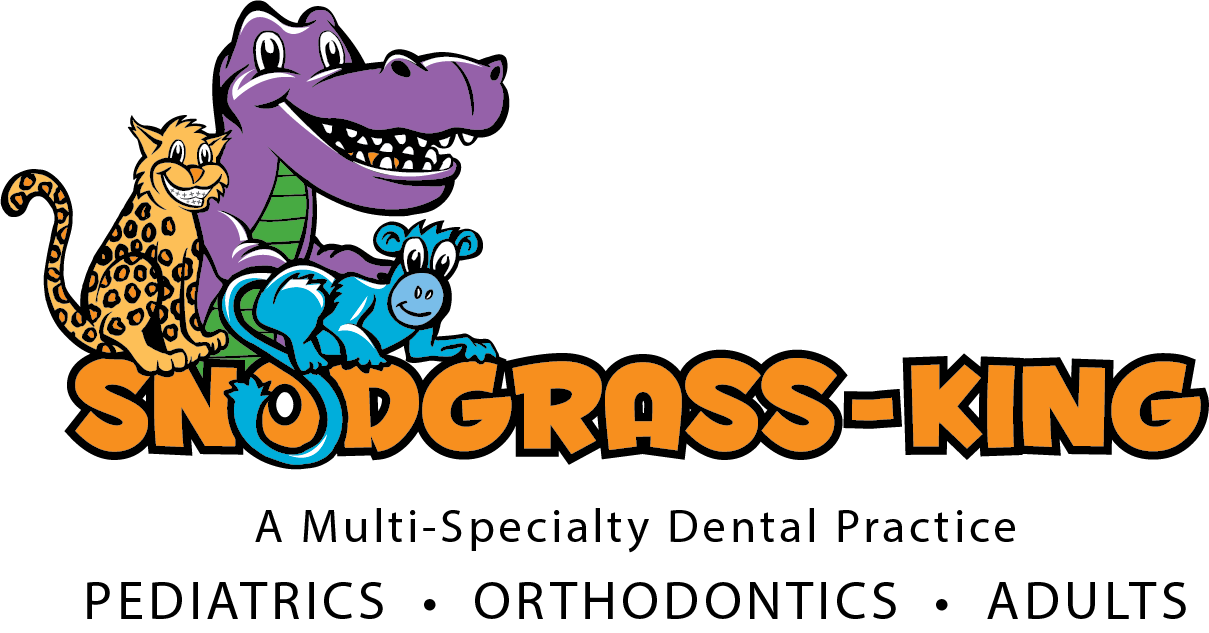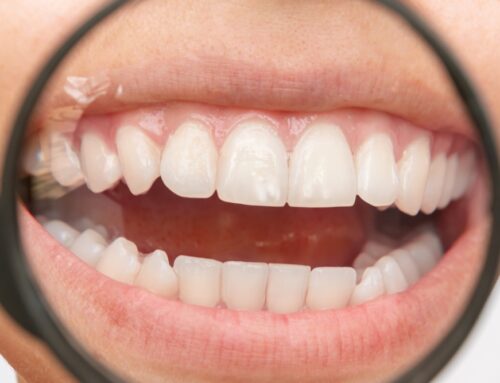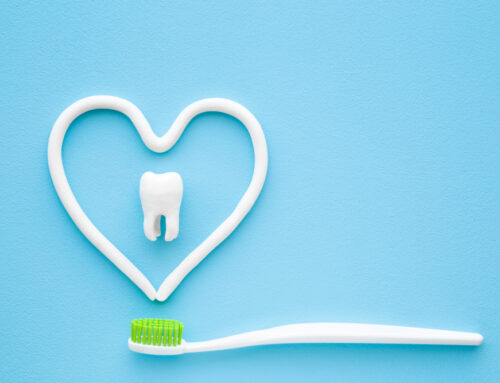
How To Fix Chipped, Gapped & Discolored Teeth
Did you know you need neither whitening treatments to fix yellowing teeth nor braces to close gapped teeth? If you have one discolored front tooth or a minor gap, you may be the perfect candidate for dental bonding or porcelain veneers.
Just like routine dental check-ups, many cosmetic procedures only take a visit or two. If you have been putting off a straighter, whiter, or generally more uniform smile, don’t wait any longer. You could have that boost of confidence and a beautiful smile in nearly no time at all by whitening discolored teeth.
Check out these safe yet effective cosmetic procedures that can give you that fast aesthetic solution you’ve been wanting.
How to Fix Stained Teeth
Tooth discoloration can occur externally (extrinsic stains) or internally (intrinsic stains). While whitening treatments may fix teeth stained on the outside from dark-colored foods, they may not fix teeth stained from the inside of the tooth. Root canals, physical injuries, and some medications can lead to internally discolored teeth. If the tooth is healthy, the best way to fix yellow or brown teeth may be through dental bonding or veneers.
Both the procedure’s cost and the length of the dental bond or veneer can determine which one is right for you.
Since fixing discolored teeth can cost from $100 to $2000+, it’s essential to contact your local dentist and discuss your cosmetic dentistry options. Snodgrass and King serves the Middle Tennessee area, and we’re happy to help you have a bright and shining smile.
Why Fix Tooth Gaps?
It may be obvious why someone will want to fix a painful chipped tooth or an unsightly discolored tooth. However, while some feel self-conscious about gapped teeth, others view it as a unique trait they love.
Cosmetic reasons aside, why should someone fix their tooth gap?
Consider how gapped teeth can affect your health. Widely spaced teeth can affect oral hygiene; gaps easily trap food particles, which can lead to bacteria and plaque build-up. Furthermore, in some cases, teeth gaps can also lead to a misaligned bite, difficulty chewing, and jaw pain. Thankfully, there are easy and quick solutions to fix tooth gaps.
Dental Bonding
Dental bonding, also called composite bonding, is a great solution for fast and efficient cosmetic and restorative needs. To close minor gaps between teeth or repair a lightly chipped tooth, bonding may be right for you. This cost-effective cosmetic procedure often provides results in one office visit!
Dental bonding can happen in just one dentist visit! Plus, the dentist can customize the composite resin to match the color of your teeth, making it look more natural.
During the visit, first, the dentist will roughen the surface of your tooth for the adhesive to stick well. Then, they will apply the adhesive and the tooth-colored resin. Once the dentist shapes the material to look like a natural tooth, they will use ultraviolet light to harden it. Lastly, the newly bonded teeth are polished to look even more natural.
However, dental bonding is not permanent; it is a reversible procedure. Therefore, avoid certain habits such as nail-biting or chewing on hard objects like pens or ice.
Cons of dental bonding include: not being as durable as other teeth restoration treatments, the composite material may stain over time, causing tooth discoloration, and the bonding material may chip or break after several years. Therefore, your dentist may recommend you replace your dental bonding in about 5-7 years.
Porcelain Veneers
A more permanent solution for chipped, gapped, and discolored teeth is porcelain veneers. Compared to dental bonding, veneers last longer, don’t stain, and can look and feel more natural. Extremely thin porcelain units are crafted to match the shape and color of your natural teeth. Every set of veneers is unique to the recipient. However, veneers are more expensive than dental bonding, and they usually require more than one visit to the dentist to complete.
On the first visit, the dentist will take a dental impression to send off to a lab for full customization. They will also remove part of your tooth enamel. The second appointment involves placing the veneers on your teeth. They are fixed to the front of your teeth using a bonding material and set using an ultraviolet light.
While veneers last longer than dental bonding, they do not last forever. Veneers could break if facial trauma occurs or when eating/chewing on hard objects. You may need to replace your veneers after 10-15 years.
Talk with us about which option is best for you!
Sedation Dentistry
Worried about cosmetic and restorative dental procedures? Ask us about sedation dentistry – a great addition to any treatment, as well as regular check-ups. Leave the dental anxiety or phobia at the door, and enjoy a pain-free experience. We recommend that everyone try it at least once.
If time is the issue, dental bonding and porcelain veneer procedures are a phenomenal way to correct discoloration, chips, and cracks, as well as gaps between teeth in no time. At Snodgrass-King Dental Associates, we understand that your time is valuable. Give us a call, or request an appointment using our easy and fast online form for your convenience. We would love to discuss your wants, needs, and which treatments may be best for you.
How to Prevent Further Tooth Stains
Once you have your dental bonding or veneers, you’ll want to do your best to keep your teeth white. Here are some practical tips to prevent stains and discoloration:
- Practice good oral hygiene. Brush and floss regularly to clean away pigmented food particles before they settle on your teeth. And remember to have regular dental cleaning and check-ups! [INSERT LINK]
- Avoid foods that stain your teeth. Foods and beverages like coffee, black tea, wine, berries, curry, soy sauce, tomato-based sauces, and sweets (especially with food coloring) can all stain your teeth. Avoid these foods and drinks and swap them for fruits, vegetables, proteins, and other healthy foods to keep your teeth white.
- Quit smoking and tobacco use. Both smoking and chewing tobacco contribute to yellow teeth. Stay away from tobacco products to prevent tooth discoloration.
- Use a whitening toothpaste and at-home whitening treatments. While whitening teeth at home won’t brighten your smile as much as a professional whitening [INSERT LINK], it can prevent severe stains.
- Rinse your mouth with water after you eat. If you can’t brush your teeth after you eat a meal or drink coffee, swish your mouth with water to wash away any acids or stains from the surface of your teeth.





